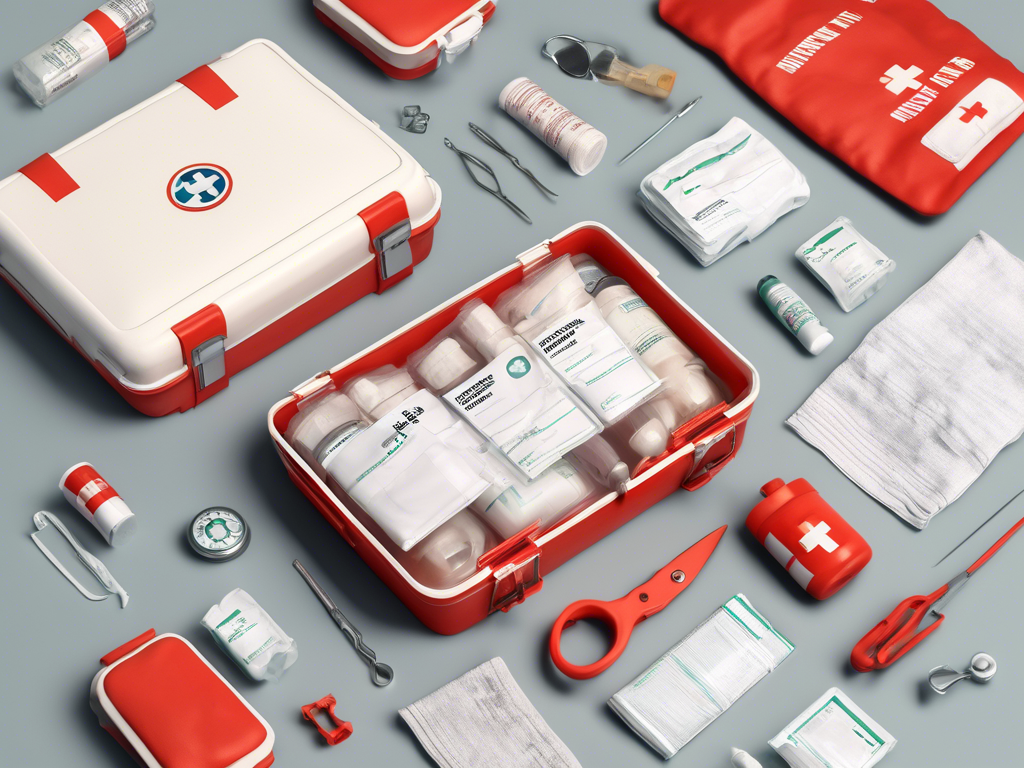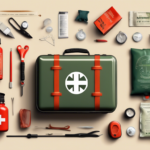In the fast-paced world of industrial operations, safety is paramount. The unpredictability of workplace environments means that having a well-equipped industrial first aid kit can be the difference between life and death in an emergency scenario. As we step into 2024, it is crucial for companies to stay informed about the latest industrial first aid kit requirements and best practices to ensure that they are prepared for any situation that may arise.
Over the years, the emphasis on workplace safety has grown exponentially, with regulations evolving to meet the challenges of modern industry. An effective first aid kit not only complies with legal standards but also reflects the unique hazards present in specific work settings. Whether you operate in heavy machinery, chemical processing, or construction, understanding the components necessary for your industrial first aid kit can significantly enhance your preparedness.
This article serves as a comprehensive guide aimed at empowering employers and safety officers with detailed knowledge on assembling, customizing, and maintaining their industrial first aid kits. We will delve into essential components, compliance regulations, and best practices to help businesses create a robust safety net for their employees. By the end of this discussion, readers will be equipped with the insights needed to not only meet regulatory requirements but also foster a culture of safety within their organizations.
Understanding the Costs of First Aid Kit Refills in 2024
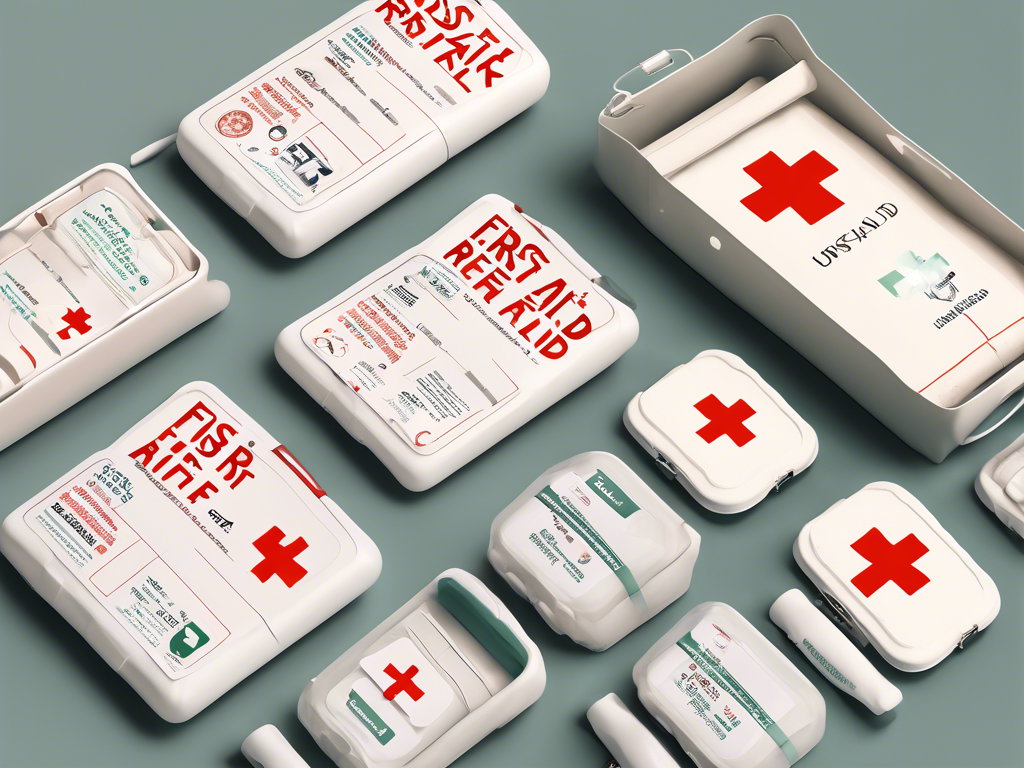
The Average Cost of First Aid Kit Refills
In 2024, the cost of first aid kit refills varies significantly based on the contents and the supplier. Generally, you can expect to pay between $20 and $100 for a refill kit, depending on whether you’re restocking a basic home kit or a more comprehensive commercial version. This cost typically includes essential first aid supplies such as bandages, antiseptics, and gauze pads. It’s crucial to consider the quality of the products as well since cheaper options may not provide the same reliability in emergency situations. 🏥
Factors Influencing the Cost
Several factors determine the overall first aid kit cost in 2024, including:
– **Quality of Supplies**: Higher-quality, brand-name products may increase your refill expenses.
– **Kit Specifications**: A commercial first aid kit usually requires more specialized items than a standard home kit.
– **Expiration Dates**: Items with shorter shelf lives may need to be replaced more frequently, affecting long-term costs.
– **Supplier Differences**: Prices can vary between local stores and online retailers, so it pays to shop around. 💲
Essential Supplies for Your First Aid Kit
When considering first aid kit refills, it’s vital to know which supplies are essential. A well-stocked kit should include:
1. Adhesive bandages
2. Sterile gauze pads and rolls
3. Antiseptic wipes
4. Medical tape
5. Tweezers and scissors
6. Pain relievers
Being aware of these items helps you assess the worth of a refill package and ensures that your kit is always prepared for emergencies. 📋
Commercial First Aid Kit Refills: What to Expect
If you run a business or manage a facility, investing in commercial first aid kit refills is crucial. These refills often come in bulk and may include additional supplies specific to workplace safety regulations. Prices typically range from $50 to $200, depending on the size and scope of the kit. Moreover, many suppliers offer subscription services, allowing you to receive timely refills as items are used up, ensuring your workplace is always compliant and safe. 🏢
Smart Shopping Tips for First Aid Supplies
To save on first aid supplies and refills in 2024, consider these shopping tips:
– **Buy in Bulk**: Purchasing items like bandages and antiseptics in larger quantities often reduces costs.
– **Check Expiration Dates**: Always check expiration dates before buying to ensure you’re getting fresh supplies.
– **Comparison Shop**: Use online resources to compare prices across different retailers.
– **Consider Kits vs. Individual Purchases**: Sometimes, a complete kit is cheaper than buying individual items.
By being proactive and informed about your choices, you can maintain a well-stocked first aid kit without breaking the bank. 🛒
Essential Supplies to Include in Your First Aid Kit Refills

Basic First Aid Essentials
A well-equipped first aid kit is fundamental in any household, workplace, or vehicle. For effective first aid kit refills, ensure that you include these basic essentials:
– **Adhesive Bandages**: These are crucial for covering minor cuts and abrasions.
– **Sterile Gauze Pads**: Used to absorb exudate from wounds.
– **Antiseptic Wipes**: Great for cleaning the affected area and preventing infection.
– **Medical Tape**: Secures gauze pads and dressings in place.
These items form the backbone of your first aid supplies and should always be stocked. 🩹
Medicines and Pain Relief
Having an adequate supply of medications is an important aspect of first aid kit refills. Consider including:
– **Over-the-counter Pain Relievers**: Such as ibuprofen or acetaminophen.
– **Allergy Medications**: Antihistamines can be lifesavers in case of allergic reactions.
– **Cold and Cough Remedies**: Useful during seasonal illnesses.
By replenishing these medicines regularly, you ensure that your kit remains functional in providing comfort during emergencies. 💊
Specialized Supplies for Unique Situations
Not all first aid situations are the same, so consider adding specialized supplies based on your needs or circumstances. Some suggestions include:
– **Burn Cream or Gel**: Essential for treating minor burns.
– **Splints**: Useful for immobilizing injured limbs until professional help arrives.
– **Instant Cold Packs**: Great for reducing swelling and pain from sprains or strains.
These special items can make a significant difference in addressing specific injuries and should not be overlooked in your first aid kit refills. 🚑
Tools and Accessories
In addition to medications and bandages, having the right tools is equally important. Essential tools might include:
– **Tweezers**: For removing splinters or debris from wounds.
– **Scissors**: Handy for cutting tape, gauze, or clothing away from an injury.
– **Thermometer**: For monitoring fevers.
Including these accessories in your first aid supplies ensures you’re prepared to administer first aid effectively in various situations. 🛠️
Periodic Checks and Rotation of Supplies
Regularly checking and rotating your first aid supplies is vital for ensuring efficacy. Make a habit of reviewing your kit every three to six months. Focus on:
– **Expiration Dates**: Discard anything past its shelf life.
– **Usage Levels**: Replace items that have been heavily used.
– **Updates**: Add new items based on recent first aid guidelines or trends.
By maintaining an organized approach to your first aid kit refills, you will be ready for emergencies at any time. 📅
How to Budget for Your First Aid Kit and Refills
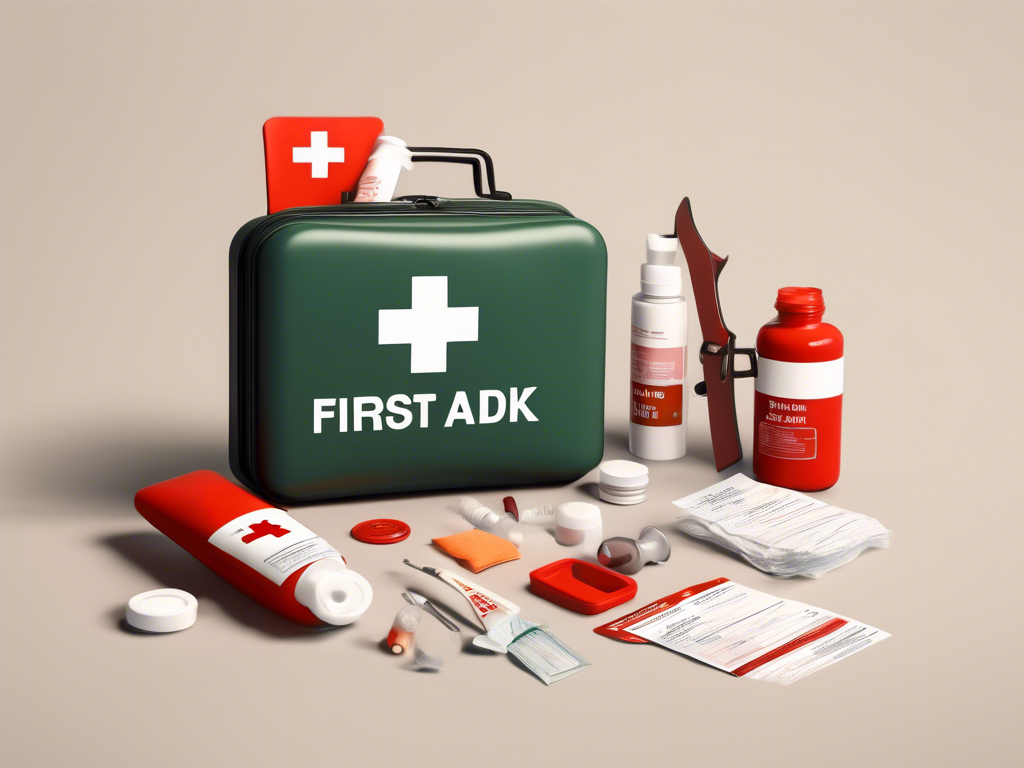
Understanding the Costs Involved
Budgeting for your first aid kit refills is essential to ensure that you have adequate supplies when needed. The average cost of refilling a residential first aid kit typically ranges from $20 to $100, depending on the items required. For businesses or commercial applications, budgets may need to account for more specialized items, leading to costs between $50 and $200. By understanding these ranges, you can set a realistic budget that meets your needs without sacrificing quality. 💵
Creating a First Aid Supplies Inventory
A good way to budget effectively is to create an inventory of your first aid supplies. This inventory should include:
– **Current Stock Levels**: Note how many of each item you have.
– **Expiration Dates**: Mark items close to their expiration for timely replacements.
– **Essential vs. Non-Essential Items**: Identify which items are critical for emergencies and which ones can be restocked over time.
This list will help you assess what you need to buy and create a more precise budget for your first aid kit cost. 📋
Setting Up a Refilling Schedule
Another effective budgeting strategy is to implement a refilling schedule. You can set reminders every three to six months to check your first aid kit and plan for refills accordingly. During this check, ensure to:
– Replace expired items in advance.
– Replenish frequently used items.
– Review any updates in first aid protocols that might necessitate additional supplies.
By planning ahead, you can spread out your refilling costs and avoid last-minute shopping that often leads to overspending. 🗓️
Exploring Cost-Saving Options
When budgeting, it’s wise to explore options that can reduce your first aid kit refills costs. Consider these strategies:
– **Bulk Purchases**: Buying items like band-aids, gauze, and antiseptics in larger quantities can lead to significant savings.
– **Subscription Services**: Some suppliers offer subscription services for commercial first aid kit refills, which can ensure regular delivery at a discounted rate.
– **DIY Kits**: For basic home use, opting for DIY first aid kits can save money. Purchase essential items separately rather than as pre-packaged kits.
Implementing these cost-saving measures will help you maintain a well-stocked kit while staying within budget. 🛒
Assessing Quality vs. Cost
While budgeting, remember that the **quality** of your first aid supplies can significantly impact safety and effectiveness. Cheaper products may save you money upfront but could fail during critical moments. When budgeting, it’s important to weigh the benefits of higher-quality items against their costs. For instance, investing in reliable antiseptics or bandages can provide better outcomes in emergencies, making them worth the extra expense. Always prioritize quality to ensure your first aid kit can be fully trusted when it’s needed most. 🌟
Comparing Commercial First Aid Kit Refills: What’s Worth the Money?
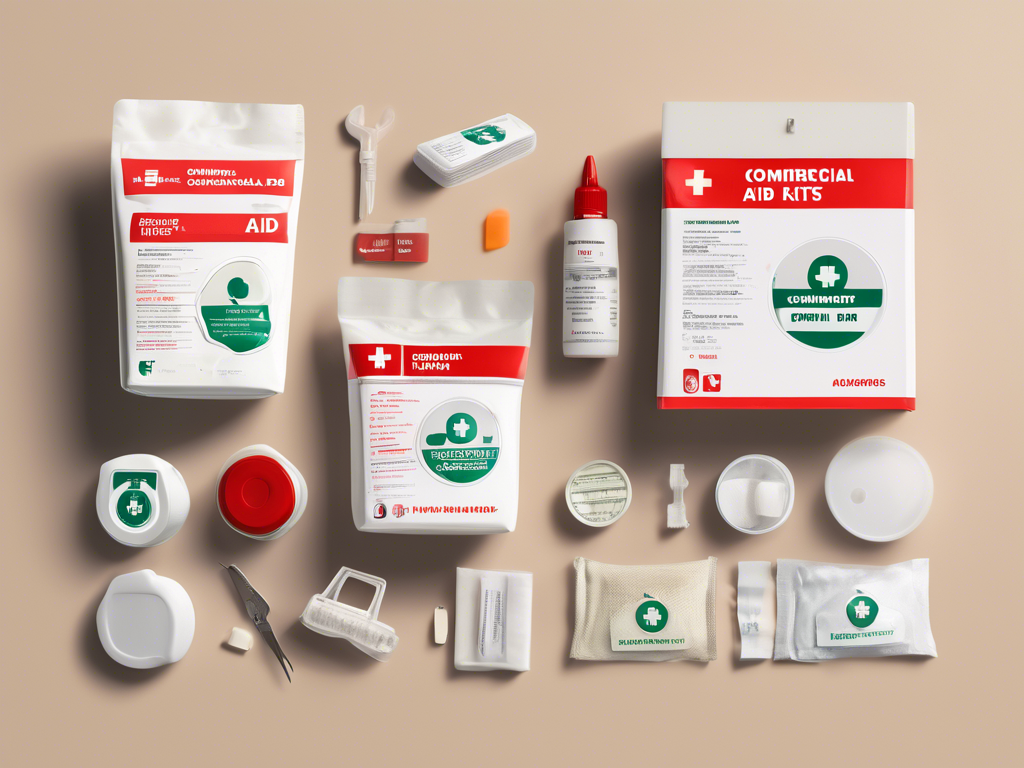
Understanding Commercial First Aid Kit Refills
When considering commercial first aid kit refills, it’s important to understand the variety of options available. These refills cater to diverse needs, from offices and schools to construction sites and events. Depending on the size and industry, you can expect a range of prices and supplies included. A basic commercial refill might start around $50, while comprehensive kits could reach upwards of $200. 🏥
Quality of Supplies Matters
The quality of included items in your first aid kit refills can significantly impact their overall value. Commercial kits often feature higher-quality products such as advanced wound dressings, specialized bandages, and professional-grade antiseptics. Investing in these premium supplies can ensure better outcomes during emergencies. Keep in mind that while cheaper kits may save you money initially, they could compromise safety when it truly matters. ⚠️
Subscription Services for Convenience
Many suppliers now offer subscription services for first aid kit refills. These services allow businesses to automate their restocking process, making it easier to maintain compliance with workplace safety regulations. Subscriptions typically provide a discount compared to individual purchases and ensure that you’re never caught without essential supplies. This added convenience can be worth the extra investment for those managing larger kits or multiple locations. 📦
Assessing Value Beyond Initial Cost
When evaluating the cost of first aid kit refills, think beyond just the initial price tag. Consider factors such as the quantity of supplies, ease of access, and the frequency of replenishment needed. For instance, a slightly more expensive kit with more extensive supplies could save you money in the long run by reducing the number of times you need to refill items. Additionally, the peace of mind that comes with knowing your supplies are high-quality and up-to-date is priceless. 💰
Specific Needs and Customization
Another consideration in comparing commercial first aid kit refills is whether your kit can be customized to fit specific needs. Some suppliers offer tailored options based on your industry or requirements, which can also affect the overall cost. This customization ensures that you have the right supplies available for potential injuries related to your unique environment, thus increasing the value of your investment. 🎯
Final Thoughts on Worthiness
Ultimately, determining what’s worth the money in first aid kit refills comes down to assessing quality, convenience, and specific needs. While it can be tempting to choose the cheapest option, focusing on long-term safety and effectiveness will serve you best. By investing wisely in your first aid supplies, you’re not just spending money; you’re ensuring preparedness in emergencies, which is invaluable. 🌟
DIY vs. Commercial First Aid Kit Refills: Which is More Cost-Effective?
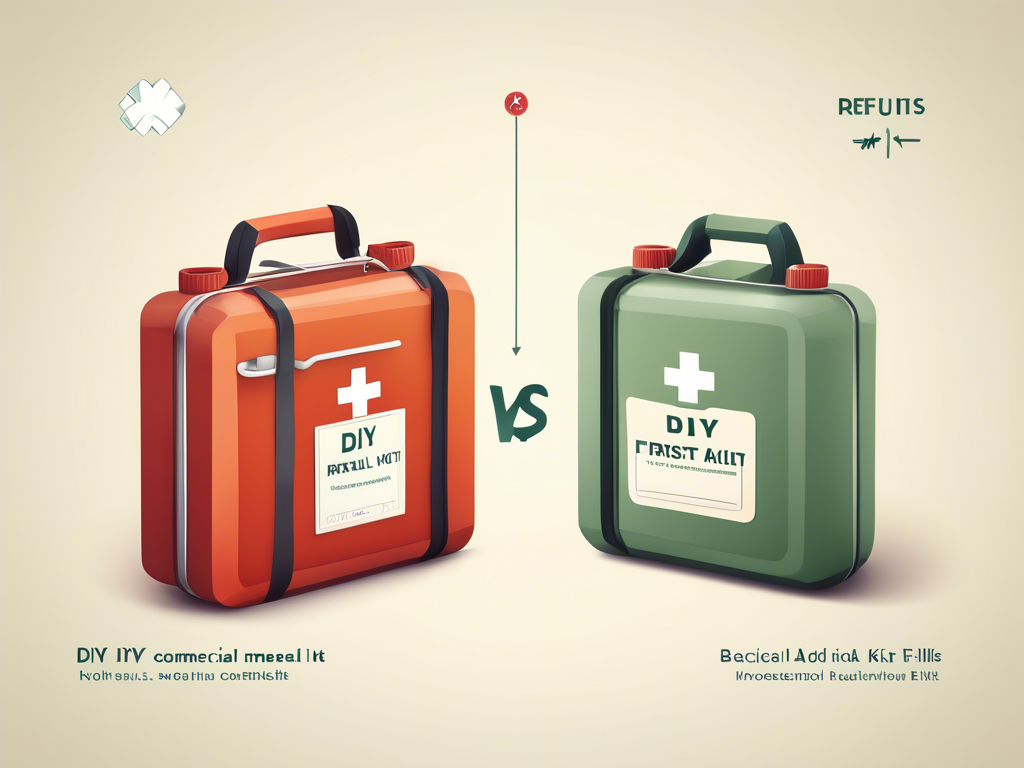
Cost Analysis of DIY First Aid Kit Refills
When considering first aid kit refills, opting for a DIY approach can be appealing due to potential cost savings. Typically, assembling your own refills allows you to purchase supplies individually, which can often result in lower upfront costs. Basic items like band-aids, antiseptics, and gauze rolls can be sourced from local pharmacies or bulk stores. This flexibility enables you to tailor your kit based on specific needs, ensuring that you only purchase what you actually require. 🛍️
Evaluating the Cost of Commercial First Aid Kit Refills
On the other hand, commercial first aid kit refills come with their own set of costs and benefits. These kits are pre-packaged and designed to meet specific safety standards, making them convenient for those without the time or expertise to assemble their own. While these kits might have a higher initial price—ranging from $50 to $200—they often include specialized items tailored for various environments, such as workplaces or outdoor activities. The convenience factor can be worth the cost for many, especially in emergency situations where time is critical. ⏱️
Long-Term Cost Considerations
While the initial investment is crucial, it’s also important to consider long-term expenses associated with either option. DIY refills may appear cheaper at first, but they require ongoing assessment and replacement of expired items. This means you must be diligent about inventory management and may incur additional costs over time if you forget to replace essential supplies. In contrast, commercial options often include scheduled replenishment services, providing peace of mind and potentially decreasing long-term costs related to stockouts and emergency purchases. 🔄
Quality of Supplies and Reliability
A vital aspect of comparing both refill strategies is the quality of the first aid supplies. DIY approaches might lead to uneven quality, as not all products are created equal. Some cheaper items could fail under pressure during emergencies. In contrast, commercial refills typically guarantee high-quality supplies that meet safety regulations. Investing in reliable items ensures you’re prepared to handle situations effectively, which can outweigh the cost difference in the long run. ⚖️
Convenience vs. Control
When deciding between DIY and commercial refills, you should weigh the importance of convenience versus control. DIY refills allow complete control over what goes into your kit, enabling customization based on personal or family needs. However, this requires an understanding of first aid protocols and the ability to keep track of items and expiration dates. On the other hand, going with a commercial refill streamlines the process, offering ready-to-use kits that can be restocked easily. Ultimately, your choice should align with your lifestyle and comfort level regarding first aid preparedness. 🏠
Conclusion: Making the Right Choice for You
Determining whether to go with DIY or commercial first aid kit refills boils down to individual needs, budget constraints, and the value placed on convenience and quality. Both options hold merits, so it’s essential to evaluate your unique circumstances. Careful consideration can lead to a wise investment, ensuring that your first aid kit is effective and ready for any emergency situation. 🌟
A Complete Guide to First Aid Supplies You Need in 2024

Essential First Aid Supplies for Home and Travel
When preparing your first aid kit, knowing the first aid supplies to include is crucial. A comprehensive kit should contain:
– **Adhesive Bandages**: For minor cuts and scrapes.
– **Sterile Gauze Pads**: To protect wounds and absorb fluids.
– **Antiseptic Wipes**: For cleaning cuts and preventing infection.
– **Medical Tape**: To secure gauze or dressings effectively.
These staples are vital for any situation, ensuring you’re well-equipped to handle common injuries at home or during your travels. 🌍
Specialty Items for Comprehensive Preparedness
In addition to basic supplies, consider adding specialty items for specific situations in your first aid kit refills. This might include:
– **Burn Cream or Gel**: Essential for treating burns of varying degrees.
– **Instant Cold Packs**: Useful for reducing swelling from sprains or strains.
– **Hydrocortisone Cream**: Helps relieve itching from insect bites or rashes.
Incorporating these items makes your kit more versatile and prepares you for a wider range of emergencies. 🚑
Refilling Your First Aid Supplies Efficiently
Regularly assessing your first aid supplies is necessary to ensure readiness. Here’s how to manage your first aid kit refills efficiently:
1. **Check Expiration Dates**: Every six months, evaluate the shelf life of your supplies.
2. **Restock Frequently Used Items**: Identify items that have been used frequently, such as adhesive bandages.
3. **Stay Informed**: Keep abreast of new recommendations in first aid protocols to optimize your kit.
By maintaining this schedule, you will always have a reliable kit on hand when needed. 📅
Understanding Costs of Common First Aid Supplies
When budgeting for first aid kit refills, it’s important to understand the costs associated with various supplies. Expect to pay approximately:
– **Basic Supplies**: $20 – $50 (adhesive bandages, antiseptics).
– **Comprehensive Kits**: $50 – $200 (commercial kits with specialized items).
Understanding your budget will help you make informed decisions and secure the best items without overspending. 💵
Commercial vs. DIY First Aid Kit Refills
Deciding between commercial and DIY options for first aid kit refills can significantly impact your preparedness. Commercial kits offer convenience and a guarantee of quality, while DIY approaches provide customization and often lower costs. Consider your needs carefully to choose the best option for your situation. Ultimately, your goal is to have a well-stocked kit that suits your lifestyle. ⚖️
Factors Affecting First Aid Kit Costs: What You Should Know

The Role of Quality in First Aid Supplies
One of the key factors influencing first aid kit cost is the quality of the supplies included. High-quality items, often from reputable brands, tend to be more expensive but can provide better reliability during emergencies. For example, premium gauze pads and antiseptics generally have improved effectiveness and longer shelf lives, making them worth the investment for your first aid kit refills. Always opt for reliable products that you can trust when it matters most! 🏥
Types of Kits: Home vs. Commercial
The type of first aid kit you need will significantly impact your costs. A standard home kit typically contains basic items and may range from $20 to $50 for refills. In contrast, a commercial first aid kit often includes specialized supplies required for workplace compliance, which can elevate the refill cost to between $50 and $200. Knowing the intended purpose of your kit will help you budget appropriately and ensure you have the necessary supplies on hand. 🏢
Expiration Dates and Replacements
Another crucial element affecting first aid kit refills costs is the expiration dates of the supplies. Items with shorter shelf lives, such as certain medications and antiseptics, need to be replaced more frequently, increasing long-term expenses. Regularly checking your kit every few months helps identify expired items and prevents unexpected costs due to last-minute purchases during emergencies. This proactive approach to managing expiration dates is essential for maintaining a reliable first aid kit. 📅
Market Variability and Supplier Choices
The prices for first aid supplies can vary widely based on where you shop. Local pharmacies might charge more than bulk retailers or online suppliers. Additionally, seasonal sales and promotions can offer significant savings on first aid kit refills, so it’s worthwhile to shop around and compare prices before making a purchase. Utilizing online platforms can also provide insights into customer reviews regarding the quality of different suppliers’ products. 💲
Customizations and Special Requirements
If you have specific needs—such as a family member with allergies or chronic conditions—it may require special items that add to the overall first aid kit cost. Customizing your kit for unique situations can enhance its effectiveness but will likely increase the price of your refills. Consider these specific needs during budgeting to ensure you have all essential supplies catered to your household dynamics. 🎯
Long-Term Cost Management Strategies
To optimize your budget for first aid kit refills, consider implementing a long-term cost management strategy. This could involve:
– **Buying in Bulk**: Reduces per-unit costs.
– **Participating in Subscription Services**: Ensures regular supply replenishment at potentially lower prices.
– **Regular Inventory Checks**: Helps you keep track of what needs replacing without over-purchasing.
By actively managing your first aid supplies and knowing when to restock, you can maintain preparedness while being mindful of your budget. 🛒
The Importance of Regularly Updating Your First Aid Kit Supplies
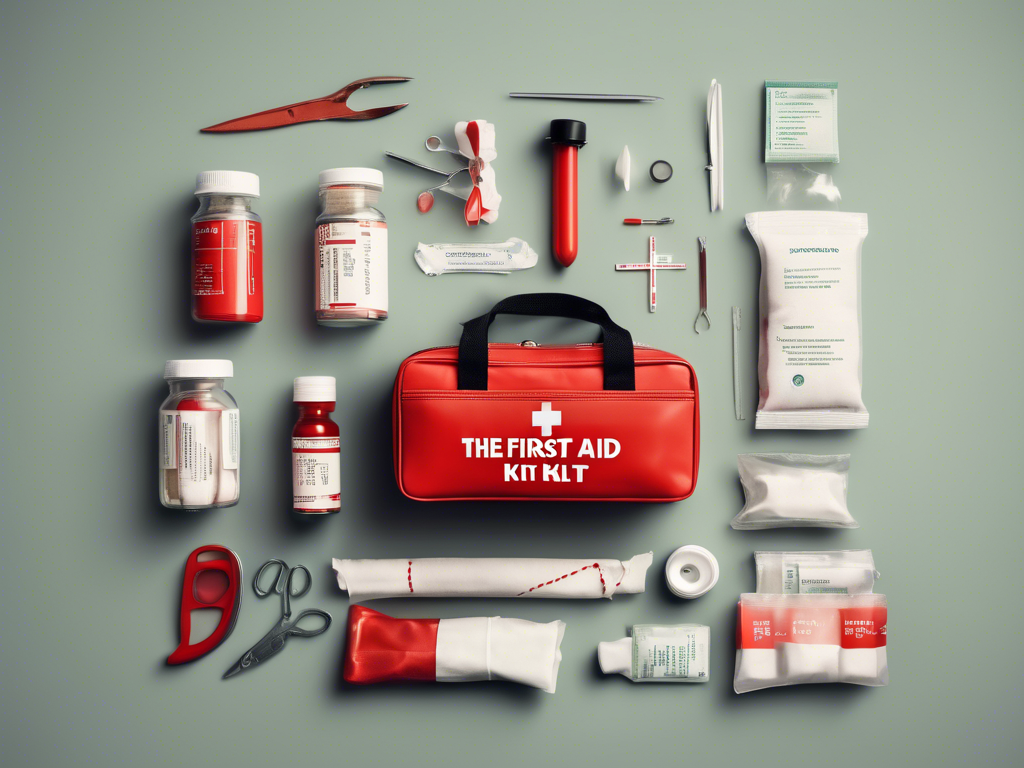
Ensuring Readiness for Emergencies
Maintaining a well-stocked first aid kit is crucial for any household or business. Regularly updating your supplies ensures that you are always prepared for unexpected situations. Items such as bandages, antiseptics, and medications can expire or become ineffective over time. By routinely checking and refilling your first aid kit, you guarantee that all supplies are reliable and effective when needed the most. 🏥
Monitoring Expiration Dates
One of the essential reasons to regularly update your first aid kit refills is to keep track of expiration dates. Many first aid supplies, particularly medications and liquid antiseptics, have specific shelf lives. Neglecting this aspect could lead to using expired products during emergencies, which may not provide the necessary protection or treatment. Make it a habit to check and replace expired supplies every three to six months. 📅
Adapting to Specific Needs
Another critical factor in the importance of updating your first aid supplies is the need to adapt the kit according to your evolving circumstances. For instance, if you have children, you might require different items than an adult-only household. Similarly, if anyone in your home has unique medical conditions or allergies, having specialized supplies on hand—such as epinephrine auto-injectors—becomes vital. Regular updates allow you to tailor your kit to suit your specific needs better. 🎯
Replacing Frequently Used Items
In addition to keeping track of expiration dates and adapting to specific needs, it’s important to restock items that you frequently use. During emergencies, certain supplies are bound to get used up quickly, such as adhesive bandages or pain relievers. This constant usage means you must be vigilant in replenishing these items to ensure your kit remains functional. By regularly assessing your supplies, you can maintain optimum readiness for any situation. 🔄
Staying Informed About New Recommendations
First aid guidelines and recommendations can change over time as new research emerges. Regularly updating your first aid kit refills allows you to stay informed about the latest best practices. This may include incorporating new types of dressings, updated medications, or specialized tools into your kit. Being proactive about these changes not only enhances the effectiveness of your first aid responses but also demonstrates a commitment to safety and preparedness. 📈
Peace of Mind for You and Your Family
Ultimately, regularly maintaining and updating your first aid kit supplies provides peace of mind for you and your loved ones. Knowing that you have a reliable and effective kit at your disposal can significantly reduce anxiety during emergencies. It empowers you to handle situations calmly and competently, ensuring the health and safety of everyone in your vicinity. Investing time in this essential task proves invaluable when those unexpected moments arise. 🌟
Where to Find Affordable First Aid Kit Refills and Supplies
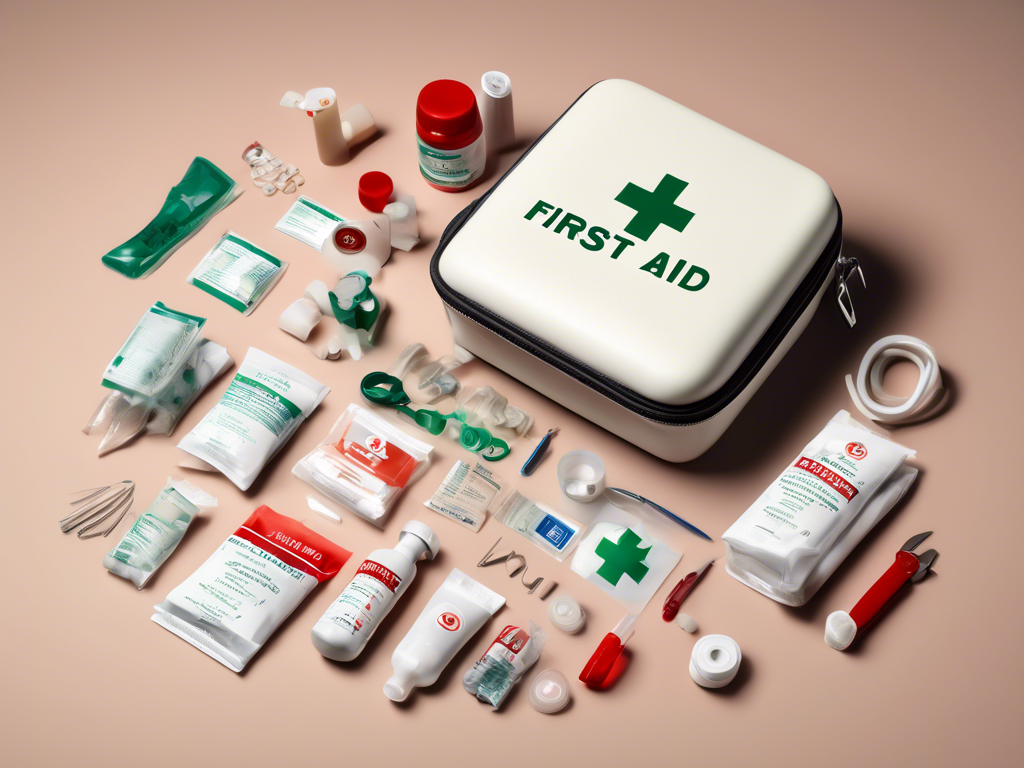
Online Retailers: The Convenience of Shopping from Home
Finding affordable first aid kit refills has never been easier thanks to online retailers. Websites like Amazon, Walmart, and specialty health stores offer extensive selections of first aid supplies, often at discounted prices compared to brick-and-mortar shops. By taking advantage of online shopping, you can quickly compare prices, read reviews, and benefit from bulk purchasing options. Many of these platforms also provide subscription services that allow you to set up regular deliveries of essential items at a reduced rate, ensuring your kit is always stocked without the hassle of reordering. 🛍️
Local Pharmacies and Health Stores: Immediate Availability
Local pharmacies and health stores are excellent places to find first aid kit refills. They often have a wide variety of basic supplies available for immediate purchase. If you need something urgently or prefer to see products before buying, visiting these stores can be convenient. Additionally, many pharmacies run promotions or loyalty programs that help save on first aid supplies. Don’t forget to check store flyers for discounts on specific items! 💊
Wholesale Clubs: Bulk Purchasing Power
Wholesale clubs like Costco or Sam’s Club are ideal for those looking to stock up on first aid kit refills and supplies at a fraction of the cost. These clubs often sell items in bulk, allowing you to save money on essentials like adhesive bandages, antiseptics, and gauze rolls. Not only do they provide substantial savings, but shopping in bulk ensures you won’t run out of supplies when you need them most. Just make sure to assess expiration dates carefully, especially for items with shorter shelf lives. 🏷️
DIY Options: Customize Your Kit and Save Money
If you’re looking for an even more affordable way to maintain your first aid kit, consider creating your own refills. It allows you to personalize your kit based on your specific needs while reducing costs associated with pre-packaged kits. By purchasing basic supplies individually —such as bandages, antiseptics, and medications—you can often find quality items at local stores or online for less than a commercial refill pack. Plus, this approach ensures you only buy what you need! 🛠️
Community Health Programs: Accessing Free Supplies
Don’t overlook community health programs that might offer free or low-cost first aid supplies. Local health fairs, schools, and non-profit organizations often hold events where they distribute essential health materials, including first aid kits and refills. It’s a great way to acquire necessary items while contributing to community wellness efforts. Keeping an eye out for these programs can lead to unexpected savings! 🌍
Subscription Boxes: Convenient and Curated Options
Finally, consider subscription box services that specialize in commercial first aid kit refills. These services provide curated packages tailored to your needs, making it simple to receive essential supplies regularly at a discounted price. Subscription boxes not only save you time but also offer flexibility to choose what items you want to prioritize for your kit. Many subscriptions allow you to adjust contents based on seasonality or personal requirements, ensuring you remain prepared year-round. 📦
Essential Components of an Industrial First Aid Kit for 2024

Basic Medical Supplies
An effective industrial first aid kit must include basic medical supplies that address common injuries in a workplace setting. These essential items typically consist of:
– **Adhesive Bandages**: For minor cuts and scrapes.
– **Sterile Gauze Pads**: To cover and protect wounds.
– **Antiseptic Wipes**: For cleaning cuts to prevent infection.
– **Medical Tape**: Used to secure gauze and dressings.
Ensuring these basics are part of your industrial first aid kit requirements is crucial for quick response during emergencies. 🩹
Personal Protective Equipment (PPE)
In industrial environments, safety is paramount, which is why including Personal Protective Equipment (PPE) in your first aid kit is essential. Some key PPE items include:
– **Disposable Gloves**: To protect against contamination while administering first aid.
– **Eye Protection**: Such as safety goggles for treating injuries to the eye area.
– **Respiratory Masks**: In case of exposure to harmful substances.
By equipping your industrial first aid kit with these protective items, you enhance safety for both the responder and the injured individual during an emergency situation. 🛡️
Burn Treatment Supplies
Burns can occur in many industrial settings, making it vital to have specialized supplies for their treatment. Ensure your industrial first aid kit requirements include:
– **Burn Gel or Cream**: Provides immediate relief for burn injuries.
– **Non-Adherent Dressings**: Protect the burned area without sticking to it.
– **Cold Packs**: For cooling the affected area and reducing pain.
Including these items will prepare your team to respond effectively to burn-related injuries, ensuring proper care when needed most. 🔥
Emergency Response Tools
A comprehensive industrial first aid kit should contain tools that facilitate immediate care. Consider adding:
– **Scissors**: For cutting tape, clothing, or bandages.
– **Tweezers**: Essential for removing splinters or debris from wounds.
– **Instant Cold Packs**: Useful for reducing swelling from sprains or strains.
These tools enable quick and efficient responses to a variety of injuries, adhering to your industrial first aid kit requirements for functionality. 🛠️
Comprehensive Instructional Materials
Having instructional materials is critical to ensure that all employees know how to use the supplies effectively. Include:
– **First Aid Manual**: Comprehensive guides on treating various injuries.
– **Emergency Contact Information**: Local emergency services and poison control numbers.
– **Checklists for Procedures**: Clear, step-by-step instructions for handling specific situations.
By integrating these educational materials, your industrial first aid kit not only provides supplies but also empowers users to act confidently and knowledgeably in emergencies. 📚
Regular Updates and Maintenance
Finally, it is essential to maintain and update your industrial first aid kit regularly. Operate on a schedule, such as every 6 months, to:
– **Check Expiration Dates**: Discard and replace expired items promptly.
– **Restock Frequently Used Supplies**: Ensure you don’t run out of critical items.
– **Keep Kits Accessible**: Confirm that all employees know where to find the kits in case of an emergency.
This ongoing attention to your industrial first aid kit requirements ensures readiness for any situation, providing peace of mind to everyone in the workplace. 🔄
Understanding Industrial First Aid Kit Requirements: A Comprehensive Guide
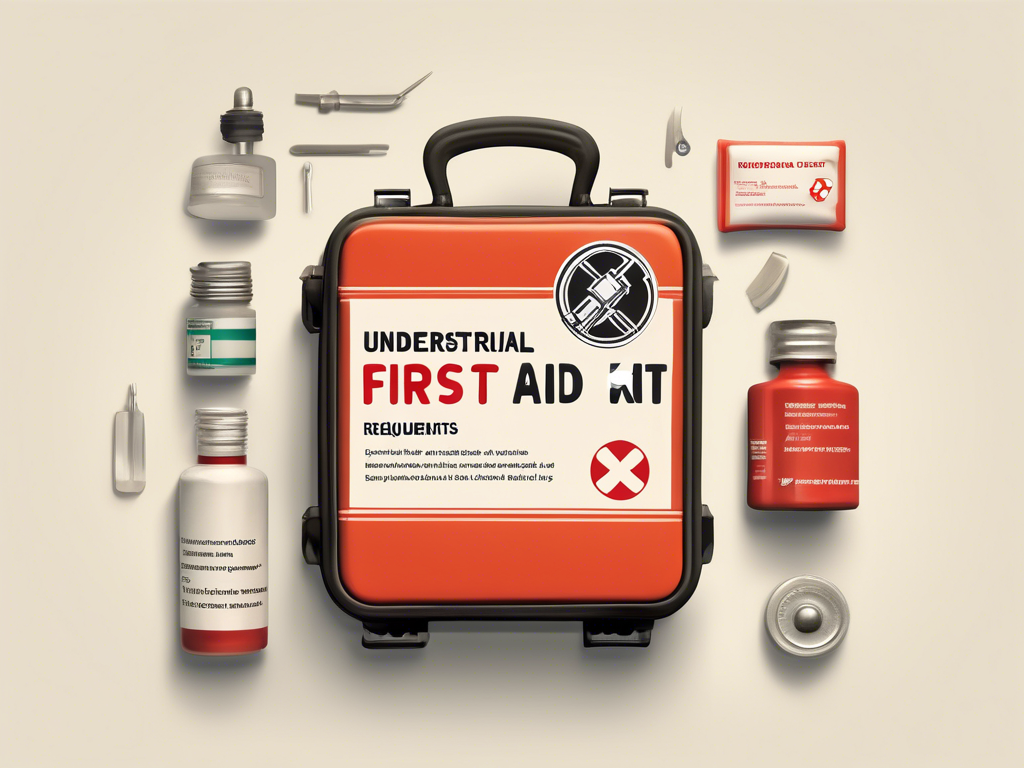
The Importance of Compliance with Industrial First Aid Kit Requirements
Understanding industrial first aid kit requirements is crucial for ensuring a safe workplace. Regulations often dictate specific contents depending on the type of industry, potential hazards, and the size of the workforce. Adhering to these guidelines not only fulfills legal obligations but also provides assurance that employees are prepared to handle emergencies effectively. Occupational Safety and Health Administration (OSHA) standards may serve as a benchmark for companies when creating their first aid kits. By prioritizing compliance, organizations foster a culture of safety and readiness. 🚧
Standard Components Every Industrial First Aid Kit Should Have
Every industrial first aid kit must contain essential supplies to address common injuries. Recommended items include:
– **Adhesive Bandages**: For minor cuts and scrapes.
– **Sterile Gauze Pads**: To cover and protect wounds.
– **Antiseptic Wipes**: For cleaning cuts to prevent infection.
– **Medical Tape**: Used to secure gauze and dressings.
Ensuring these basics are part of your industrial first aid kit requirements is crucial for quick response during emergencies. 🩹
Customizing Your Kit Based on Workplace Risks
Evaluating the unique risks associated with your industry is vital in customizing your industrial first aid kit. Consider adding specialized items such as:
– **Burn Gel or Cream**: For immediate treatment of burn injuries.
– **Splints**: For immobilizing broken limbs or sprains.
– **Eye Wash Stations**: Important in environments with potential eye hazards.
Tailoring your kit based on specific workplace hazards enhances its effectiveness and ensures you are prepared for the situations most likely to occur within your operational environment. 🔍
Regular Maintenance and Updates of First Aid Supplies
Maintaining your industrial first aid kit is essential for its efficacy. Companies should implement regular checks—ideally every 6 months—to:
– **Review Expiration Dates**: Discard and replace expired items promptly.
– **Restock Frequently Used Supplies**: Ensure you don’t run out of critical items.
– **Train Staff**: Keep employees informed about kit locations and usage.
This ongoing attention to your industrial first aid kit requirements ensures readiness for any situation, providing peace of mind to everyone in the workplace. 🔄
Training Employees on First Aid Kit Usage
Equipping your industrial first aid kit with supplies is just one part of preparedness; training is equally vital. Conduct regular training sessions to ensure all employees understand how to use the kit effectively. This should cover:
– **First Aid Techniques**: Basic skills for treating common injuries.
– **Emergency Response Procedures**: Understanding when and how to escalate issues.
– **Kit Familiarization**: Ensuring everyone knows where the kit is located and its contents.
With proper training, you empower employees to respond confidently and competently during emergencies, ultimately enhancing workplace safety. 🎓
Documentation and Record-Keeping
Lastly, maintaining documentation related to your industrial first aid kit requirements is critical. Keep records of:
– **Inventory Checks**: Document dates and findings from regular maintenance checks.
– **Employee Training Sessions**: Note who participated and when training occurred.
– **Incidents Responded To**: Log all emergencies addressed using the first aid kit.
This thorough record-keeping supports compliance with regulations and can provide valuable insights into areas needing improvement, ensuring a consistently effective emergency response strategy. 📊
Industrial First Aid Kits: Requirements and Best Practices for 2024
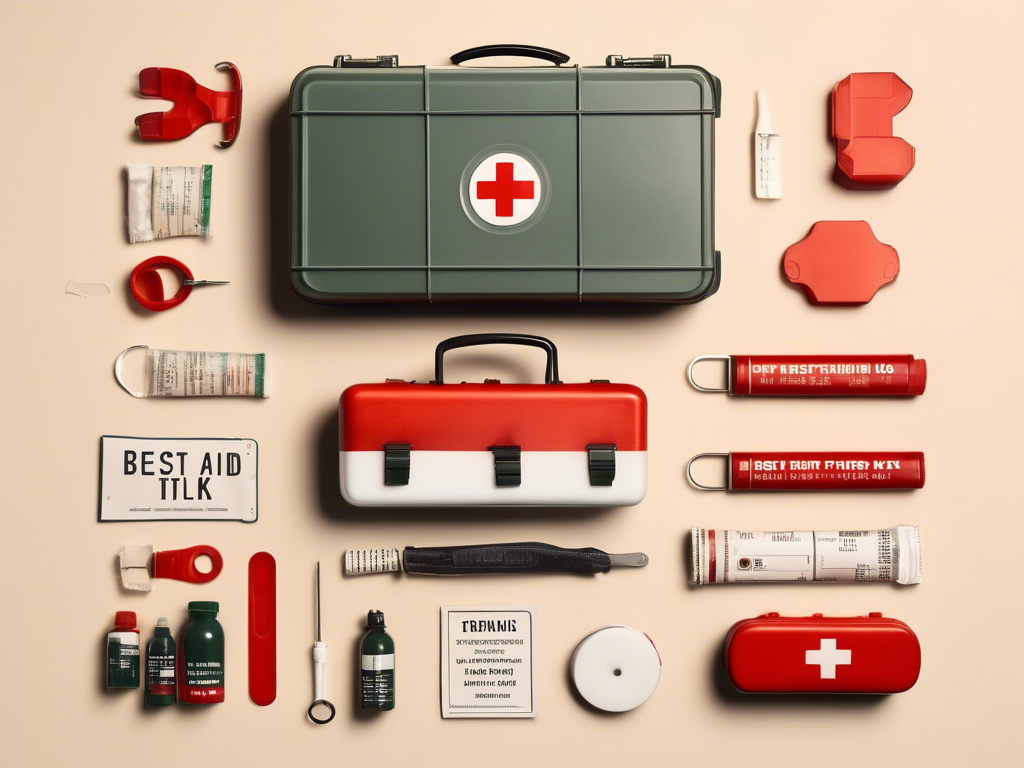
Evaluating Your Industrial First Aid Kit Needs
Before assembling your industrial first aid kit, it’s essential to assess the specific needs of your workplace. Consider factors such as the number of employees, the types of hazards present, and the likelihood of injuries occurring. By understanding these aspects, you can determine which supplies are critical and tailor your kit accordingly. For example, workplaces with machinery may require additional items like splints and eye wash stations to address potential injuries more effectively. 🏢
Stocking Up on Essential Supplies
Your industrial first aid kit requirements should include basic medical supplies that cater to common injuries. Here’s a list of essentials:
– **Adhesive Bandages**: For covering minor cuts and abrasions.
– **Sterile Gauze Pads**: To protect deeper wounds.
– **Antiseptic Wipes**: For cleaning wounds to prevent infection.
– **Medical Tape**: To secure dressings.
Ensuring these items are stocked helps prepare your team for immediate response during emergencies. 📦
Incorporating Specialized Items for Unique Risks
Depending on your industry, you may need to include specialized supplies in your industrial first aid kit. Some suggestions are:
– **Burn Cream or Gel**: Crucial for treating burn injuries.
– **Instant Cold Packs**: To alleviate pain from sprains or strains.
– **Eye Protection Equipment**: Important in settings where eye injuries are prevalent.
By including these specialized items, you can enhance your preparedness for specific incidents that could arise in your workplace. 🔧
Understanding Regulatory Compliance
It’s important to ensure your industrial first aid kit meets all regulatory compliance standards set by organizations such as OSHA. Regulations may vary by industry but generally require specific contents based on workplace risks and employee size. Regularly reviewing these guidelines will help you maintain compliance while ensuring the safety of your workforce. Stay informed about updates to regulations to prevent any penalties and promote a culture of safety. 🚨
Training Staff on First Aid Kit Usage
Having a well-stocked industrial first aid kit is only part of the equation; training staff on how to use the supplies is equally vital. Conduct regular training sessions to teach employees about:
– **Basic First Aid Techniques**: Skills needed to manage various injuries.
– **Emergency Procedures**: Protocols to follow in case of serious incidents.
– **Familiarization with Kit Contents**: Ensuring everyone knows where the kit is located and what it contains.
Well-trained employees can respond swiftly and competently, enhancing overall workplace safety. 🎓
Regular Maintenance and Inventory Checks
Finally, it’s crucial to perform regular maintenance and inventory checks of your industrial first aid kit. Aim for bi-annual assessments to:
– **Verify Expiration Dates**: Remove and replace expired items to ensure efficacy.
– **Restock Frequently Used Supplies**: Keep track of what gets used most often.
– **Update Training Materials**: Incorporate new protocols or supplies as needed.
This commitment to upkeep ensures that your kit is always ready for emergencies and complies with industrial first aid kit requirements. 🔄
Top 10 Must-Have Items in Every Industrial First Aid Kit

Basic Medical Supplies
A well-equipped industrial first aid kit should always contain basic medical supplies to address common workplace injuries. Essential items include:
– **Adhesive Bandages**: For covering minor cuts and abrasions.
– **Sterile Gauze Pads**: To protect deeper wounds.
– **Antiseptic Wipes**: For cleansing wounds and preventing infections.
– **Medical Tape**: Needed to secure dressings effectively.
These staples form the foundational components of your industrial first aid kit requirements and are crucial for swift responses during emergencies. 🩹
Personal Protective Equipment (PPE)
Safety is paramount in industrial settings, so including Personal Protective Equipment (PPE) in your first aid kit is critical. Key PPE items should include:
– **Disposable Gloves**: Protect against contamination while administering care.
– **Eye Protection**: Like safety goggles for treating eye-related injuries.
– **Respiratory Masks**: Necessary in case of exposure to harmful substances.
Equipping your industrial first aid kit with these protective items enhances safety for both responders and individuals requiring assistance. 🛡️
Burn Treatment Supplies
Given the nature of many industrial workplaces, burns can often occur. Thus, it’s essential to include specialized supplies for burn treatment, like:
– **Burn Gel or Cream**: Provides immediate relief for burn injuries.
– **Non-Adherent Dressings**: Protects burn sites without sticking to them.
– **Cold Packs**: Helps cool the burned area and reduce pain.
Incorporating these items will better prepare your team to respond effectively to burn-related incidents. 🔥
Emergency Response Tools
An effective industrial first aid kit should feature tools that facilitate immediate care. Consider adding:
– **Scissors**: For cutting tape, gauze, or clothing away from an injury.
– **Tweezers**: Essential for removing splinters or debris from wounds.
– **Instant Cold Packs**: Useful for reducing swelling from sprains or strains.
These tools enable quick and efficient responses to various injuries, upholding your industrial first aid kit requirements for functionality. 🛠️
Comprehensive Instructional Materials
Having instructional materials is key to ensuring that anyone using the kit knows how to apply supplies effectively. Include:
– **First Aid Manual**: Comprehensive guides on treating different injuries.
– **Emergency Contact Information**: Local emergency services and poison control numbers.
– **Checklists for Procedures**: Step-by-step instructions for handling specific situations.
By integrating these educational materials, your industrial first aid kit not only provides supplies but also empowers users to act knowledgeably in emergencies. 📚
Regular Updates and Maintenance
Finally, it’s vital to maintain and regularly update your industrial first aid kit. Implement a schedule, such as every six months, to:
– **Check Expiration Dates**: Discard and replace expired items promptly.
– **Restock Frequently Used Supplies**: Ensure you don’t run out of critical items.
– **Keep Kits Accessible**: Confirm that all employees know where to find the kits.
This ongoing attention to your industrial first aid kit requirements ensures readiness for any situation, providing peace of mind to everyone in the workplace. 🔄
Navigating Compliance: Industrial First Aid Kit Regulations You Should Know
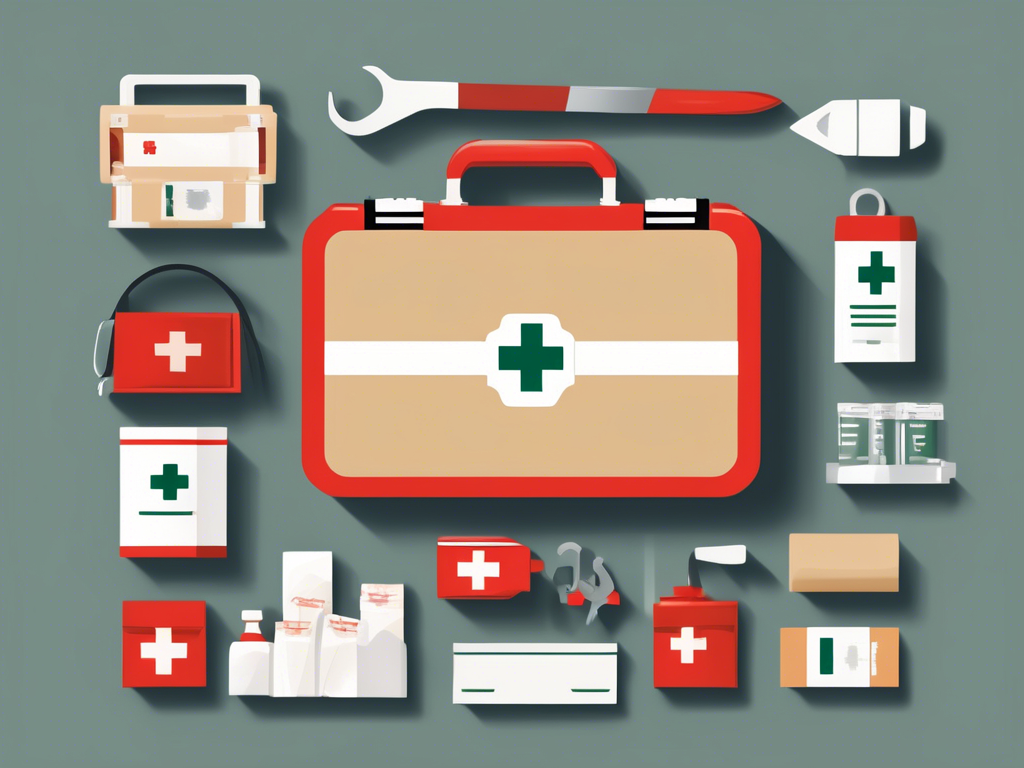
Understanding OSHA Regulations
Complying with industrial first aid kit requirements is essential for workplace safety and adherence to regulations set forth by agencies such as the Occupational Safety and Health Administration (OSHA). OSHA outlines specific guidelines that dictate what should be included in industrial first aid kits based on the type of industry, number of employees, and potential hazards present. Familiarizing yourself with these requirements ensures that your organization remains compliant and provides employees with the necessary tools for effective emergency response. 🚧
Contents According to Industry Standards
The contents of an industrial first aid kit should reflect the unique risks associated with your specific workplace. Typical items mandated by various standards may include:
– **Adhesive Bandages**: For minor cuts and scrapes.
– **Sterile Gauze Pads**: To cover larger wounds.
– **Burn Treatment Supplies**: Including burn gel and non-adherent dressings.
– **Antiseptic Wipes**: Essential for infection prevention.
Ensuring that your kit includes these standard items not only meets legal obligations but enhances safety and preparedness among workers. 📋
Customizing Kits for Specific Risks
Tailoring your industrial first aid kit to accommodate the risks inherent to your work environment is crucial. For workplaces dealing with machinery, consider adding:
– **Splints**: For immobilizing injured limbs.
– **Eye Wash Stations**: Necessary in environments where chemical exposure is possible.
– **Respiratory Masks**: For situations involving harmful substances.
These specialized items help ensure that your kit effectively addresses potential injuries unique to your operational setting. 🔍
Regular Maintenance and Compliance Checks
Maintaining compliance with industrial first aid kit requirements involves conducting regular inventory checks and maintenance. It’s vital to:
– **Review Expiration Dates**: Ensure all supplies are current and effective.
– **Restock Frequently Used Items**: Replace any items consumed during emergencies.
– **Train Employees**: Regularly educate staff on kit locations and proper usage.
By implementing these practices, organizations can sustain readiness in the face of workplace emergencies. 🔄
Documentation for Compliance and Training
Proper documentation plays a critical role in navigating industrial first aid kit regulations. Keep records of:
– **Inventory Assessments**: Log dates and findings from kit inspections.
– **Training Sessions**: Document participation and content covered.
– **Emergency Response Incidents**: Track how first aid kits have been utilized.
This thorough approach not only helps you stay compliant but also provides insights into areas needing improvement, fostering a culture of safety in your workplace. 📊
How to Customize Your Industrial First Aid Kit for Specific Work Environments
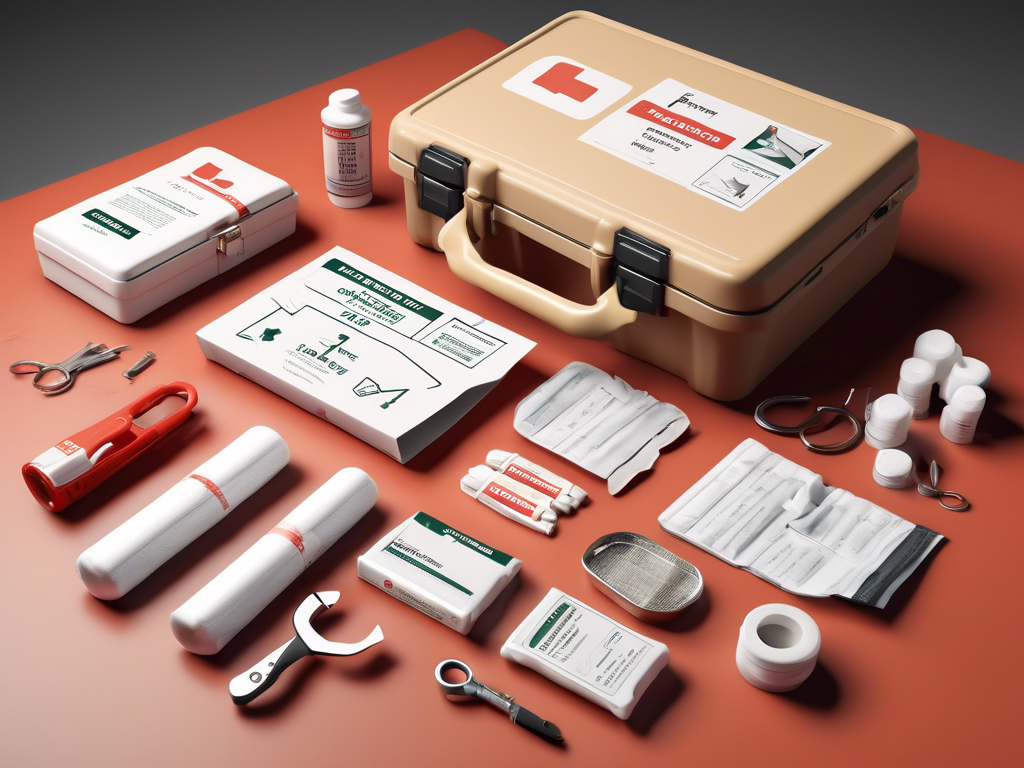
Assessing Workplace Hazards
Customizing your industrial first aid kit starts with a thorough assessment of the hazards present in your work environment. Take into account factors such as:
– **Type of Industry**: Manufacturing, construction, and laboratories each have unique injury risks.
– **Common Injuries**: Identify injuries that are most likely to occur, such as cuts, burns, or sprains.
– **Number of Employees**: The size of your workforce may influence the number of supplies needed.
Understanding these variables helps ensure that your first aid kit meets specific industrial first aid kit requirements for effective emergency preparedness. 🔍
Incorporating Specialized Supplies
Once you’ve identified workplace hazards, incorporate specialized items tailored to those specific risks. Consider adding:
– **Burn Treatment Supplies**: Essential for environments with heat exposure.
– **Eye Wash Stations**: Critical in settings where chemicals are used.
– **Splints and Immobilizers**: Useful for industries prone to fractures or sprains.
These tailored components enhance the functionality of your industrial first aid kit and improve response times during emergencies. 🛠️
Training Employees on Custom Kits
To maximize the effectiveness of your customized industrial first aid kit, training employees is essential. Ensure that workers are familiar with:
– **Kit Location**: Everyone should know where the first aid kit is stored.
– **Supplies and Their Uses**: Conduct training on how to use each item properly.
– **Emergency Procedures**: Outline steps to follow when an injury occurs.
Well-informed employees can act quickly and confidently in emergencies, greatly enhancing workplace safety. 🎓
Regular Assessment and Updates
Even after customizing your industrial first aid kit, ongoing assessment is crucial. Schedule regular reviews (every 6-12 months) to:
– **Check Expiration Dates**: Replace expired items promptly.
– **Restock Frequently Used Supplies**: Ensure you have adequate quantities based on usage.
– **Modify Contents as Needed**: Adapt the kit for any new hazards that emerge.
Maintaining an up-to-date kit ensures compliance with industrial first aid kit requirements and optimizes readiness for any situation. 📅
Documentation for Compliance and Safety
Lastly, keep meticulous records of your customized industrial first aid kit. Document:
– **Inventory Checks**: Log the contents and condition of your kit.
– **Employee Training Sessions**: Record dates and participants.
– **Accident Reports**: Track incidents where the first aid kit was utilized.
This comprehensive documentation supports compliance with regulations and underscores your commitment to employee safety. 📊
The Importance of Regularly Updating Your Industrial First Aid Kit
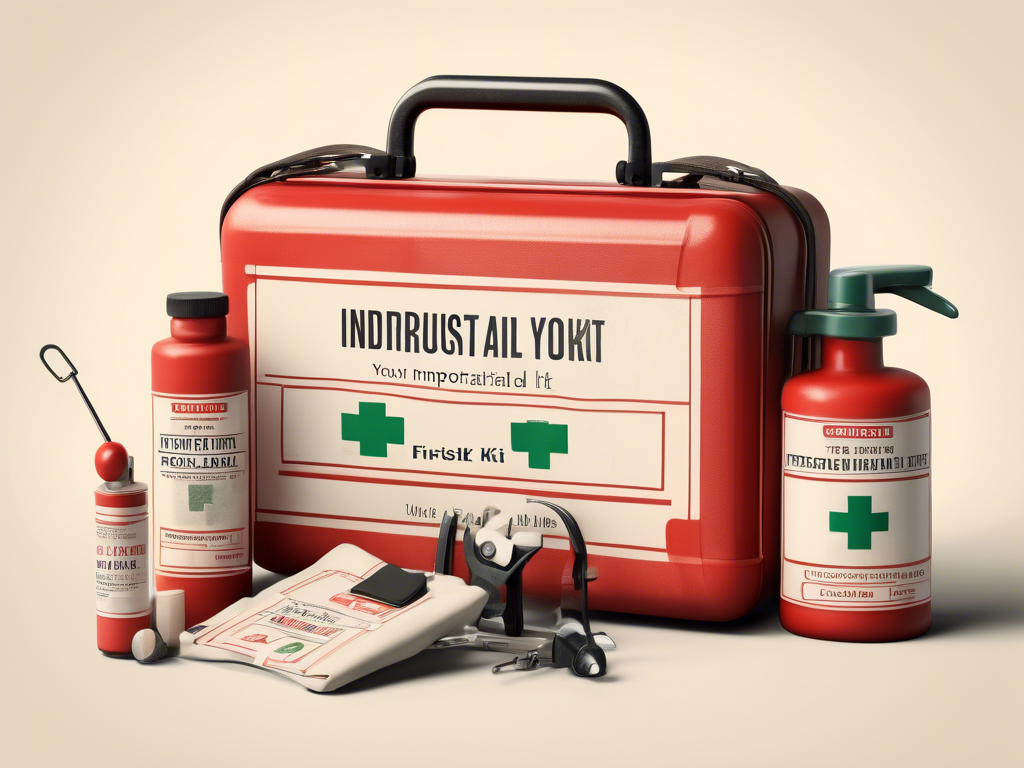
Ensuring Readiness for Emergencies
Maintaining a well-stocked industrial first aid kit is crucial for any workplace. Regularly updating your supplies ensures that you are always prepared for unexpected situations. Items such as bandages, antiseptics, and medications can expire or become ineffective over time. By routinely checking and refilling your first aid kit, you guarantee that all supplies are reliable and effective when needed the most. 🏥
Monitoring Expiration Dates
One of the essential reasons to regularly update your first aid kit refills is to keep track of expiration dates. Many first aid supplies, particularly medications and liquid antiseptics, have specific shelf lives. Neglecting this aspect could lead to using expired products during emergencies, which may not provide the necessary protection or treatment. Make it a habit to check and replace expired supplies every three to six months. 📅
Adapting to Specific Needs
Another critical factor in the importance of updating your first aid supplies is the need to adapt the kit according to your evolving circumstances. For instance, if your industry sees new hazards or if new equipment is introduced, the first aid needs may change. Similarly, if anyone in your workplace has unique medical conditions or allergies, having specialized supplies on hand—such as epinephrine auto-injectors or burn treatment gels—becomes vital. Regular updates allow you to tailor your kit to suit your specific needs better. 🎯
Replacing Frequently Used Items
In addition to keeping track of expiration dates and adapting to specific needs, it’s important to restock items that you frequently use. During emergencies, certain supplies are bound to get used up quickly, such as adhesive bandages or pain relievers. This constant usage means you must be vigilant in replenishing these items to ensure your kit remains functional. By regularly assessing your supplies, you can maintain optimum readiness for any situation. 🔄
Staying Informed About New Recommendations
First aid guidelines and recommendations can change over time as new research emerges. Regularly updating your first aid kit refills allows you to stay informed about the latest best practices. This may include incorporating new types of dressings, updated medications, or specialized tools into your kit. Being proactive about these changes not only enhances the effectiveness of your first aid responses but also demonstrates a commitment to safety and preparedness. 📈
Peace of Mind for You and Your Team
Ultimately, regularly maintaining and updating your industrial first aid kit supplies provides peace of mind for you and your team. Knowing that you have a reliable and effective kit at your disposal can significantly reduce anxiety during emergencies. It empowers everyone to handle situations calmly and competently, ensuring the health and safety of everyone in your workplace. Investing time in this essential task proves invaluable when those unexpected moments arise. 🌟
Training Employees on Effective Use of Industrial First Aid Kits
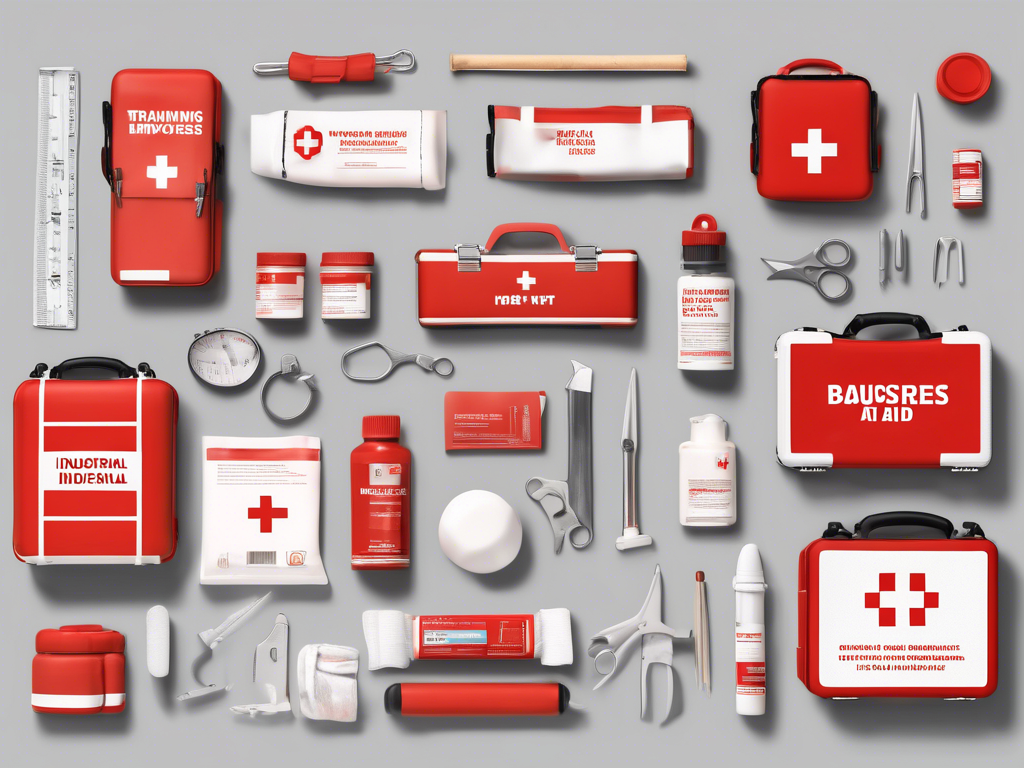
Understanding the Importance of Training
Training employees on the effective use of industrial first aid kits is vital for ensuring safety in the workplace. Properly trained staff can respond efficiently during emergencies, minimizing injury and facilitating quicker recovery. A comprehensive training program should cover not only how to use the supplies within the kit but also when to seek further medical assistance. Regular sessions help reinforce this knowledge, keeping safety a top priority within the organization. 🚑
Key Components of First Aid Training
When developing a training curriculum, focus on several key components to ensure employees are well-informed:
– **Basic First Aid Techniques**: Teaching CPR, wound care, and how to manage burns or sprains.
– **Emergency Response Protocols**: Steps to take during an emergency, including contacting emergency services.
– **Familiarity With Kit Contents**: Employees should be trained on what items are in the industrial first aid kit and how to use them effectively.
Providing comprehensive training bolsters confidence and readiness among staff, leading to better overall workplace safety. 📚
Hands-On Practice Sessions
Incorporating hands-on practice into training sessions can significantly enhance learning and retention. Organizing drills where employees simulate real-life scenarios can help them become familiar with the kit’s supplies. During these practice sessions, focus on:
– **Using Supplies Correctly**: Hands-on experience allows employees to familiarize themselves with items such as bandages, antiseptics, and splints.
– **Team Coordination**: Simulating emergency situations encourages teamwork and communication among employees.
– **Evaluation and Feedback**: After drills, provide constructive feedback to refine skills and improve protocols.
This practical approach not only reinforces training concepts but also ensures that employees feel confident in their abilities to respond effectively. 🛠️
Regular Refresher Courses
To maintain a high level of preparedness, it’s essential to schedule regular refresher courses. These courses should:
– **Address Updates in First Aid Guidelines**: Ensure that employees are kept informed of any new procedures or items that have been added to the kit.
– **Evaluate Employee Knowledge**: Conduct assessments to gauge understanding and identify areas that may need further clarification.
– **Foster a Safety Culture**: Reiterate the importance of safety and the role of each employee in maintaining it.
By committing to ongoing education, organizations can cultivate a workplace environment where safety and preparedness remain paramount. 🌟
Documentation and Record Keeping
Finally, keeping thorough documentation of training sessions is essential for compliance and continuous improvement. Maintain records that include:
– **Training Dates and Attendance**: Document who attended the training and when it occurred.
– **Course Content**: Keep notes on what was covered during each session.
– **Assessment Results**: Track employee performance during evaluations to identify strengths and areas for growth.
These records not only assure compliance with regulations but also demonstrate the commitment of the organization to the health and safety of its employees. 📊
Future Trends in Industrial First Aid Kits: What to Expect in 2024
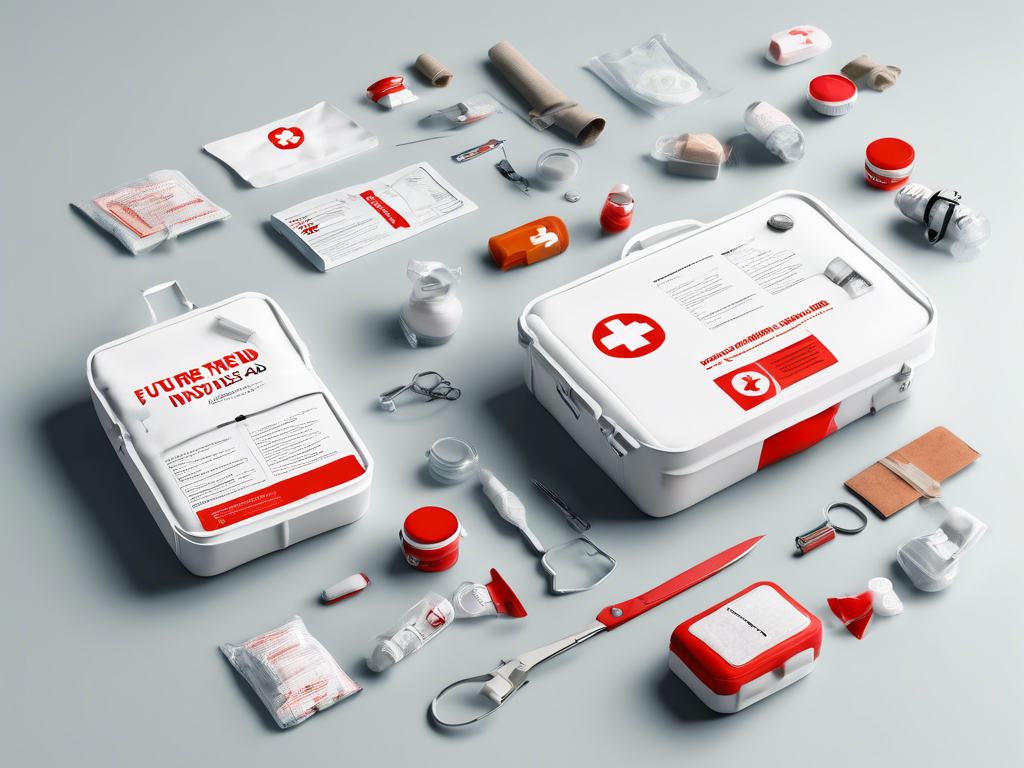
Integration of Smart Technology
In 2024, we can expect a surge in the use of smart technology in industrial first aid kits. Innovations may include features like:
– **Digital Inventory Management**: Integrated systems to track supplies and alert users when items need restocking.
– **Smart Sensors**: Sensors that monitor environmental conditions to ensure optimal storage of sensitive supplies.
– **Mobile Apps**: Applications that guide users through first aid procedures via step-by-step instructions and video tutorials.
The incorporation of technology enhances the effectiveness of first aid responses and creates a safer work environment. 📱
Personalization Based on Workplace Risks
Another trend anticipated for 2024 is the customization of industrial first aid kits based on specific workplace hazards. Companies will increasingly analyze their unique risks to tailor their kits. Expect to see:
– **Industry-Specific Supplies**: Kits designed for specific sectors, such as construction or manufacturing, with specialized tools like chemical burn treatments.
– **Adaptable Content**: Kits that allow for easy modifications of content based on seasonal hazards or changes in employees’ needs.
This level of personalization ensures that workplaces are equipped with the right tools to handle their most common risk factors effectively. 🔍
Emphasis on Sustainability
Sustainability will play a significant role in the evolution of industrial first aid kits in 2024. More companies are recognizing the importance of eco-friendly practices, leading to:
– **Biodegradable Supplies**: A shift towards using biodegradable materials for bandages, packaging, and other components.
– **Sustainable Sourcing**: An increase in sourcing first aid supplies from manufacturers that prioritize ethical and sustainable practices.
These changes not only improve workplace safety but also contribute to larger environmental goals. 🌱
Telehealth Integration for Enhanced Care
As telehealth continues to gain traction, the intersection between first aid and virtual health consultations is expected to evolve in 2024. Organizations may implement:
– **Telehealth Support**: Access to medical professionals via video calls during emergencies for real-time advice on treatment and care procedures.
– **Remote Training Sessions**: Utilizing telehealth capabilities to deliver training sessions for employees on first aid techniques and kit utilization.
This integration allows for immediate professional guidance and improves overall emergency response effectiveness. 💻
Advanced Education and Training Initiatives
With a focus on enhancing safety protocols, there will be increased investment in training initiatives surrounding industrial first aid kits. Expect to see:
– **Comprehensive Training Programs**: Courses that go beyond basic first aid to cover advanced topics, such as mental health first aid and trauma response.
– **Regular Updates on Best Practices**: Continuous education on the latest first aid guidelines and evolving supply technologies.
These initiatives will empower employees to act competently and confidently in emergencies, fostering a culture of preparedness. 🎓
Collaboration with Safety Organizations
Finally, organizations are likely to collaborate more closely with safety institutions and experts to ensure compliance and update their practices regularly. This trend may include:
– **Partnerships**: Working with organizations like OSHA to develop guidelines tailored to specific industries.
– **Safety Audits**: Regularly conducting safety audits to assess kit adequacy and employee readiness.
Such collaborations will enhance the reliability and responsiveness of industrial first aid kits across various sectors, improving workplace safety standards overall. 🤝
Summing up
In conclusion, ensuring that your industrial first aid kit is equipped according to the latest industrial first aid kit requirements is not just a regulatory obligation; it is a critical aspect of workplace safety that can save lives. Throughout this article, we explored the essential components that should be included in every kit and the best practices for assembling them effectively. Understanding compliance with regulations helps organizations avoid fines and legal issues while protecting their workforce.
Additionally, customizing kits to address the specific hazards of different work environments demonstrates a commitment to employee wellbeing. Regular updates and training further bolster the effectiveness of these kits, ensuring that all employees are prepared to act swiftly in an emergency. The implications of neglecting proper first aid preparations can be severe, leading to preventable injuries or even fatalities.
As we look ahead to 2024, it’s essential for businesses to recognize the evolving nature of workplace risks and adapt their safety practices accordingly. By investing time and resources into creating and maintaining a compliant, well-stocked industrial first aid kit, organizations not only safeguard their employees but also contribute to a culture of safety and responsibility. Ultimately, let us remember that the health and safety of workers should always be a top priority—because when it comes to emergency preparedness, being proactive is the key to protecting lives.
